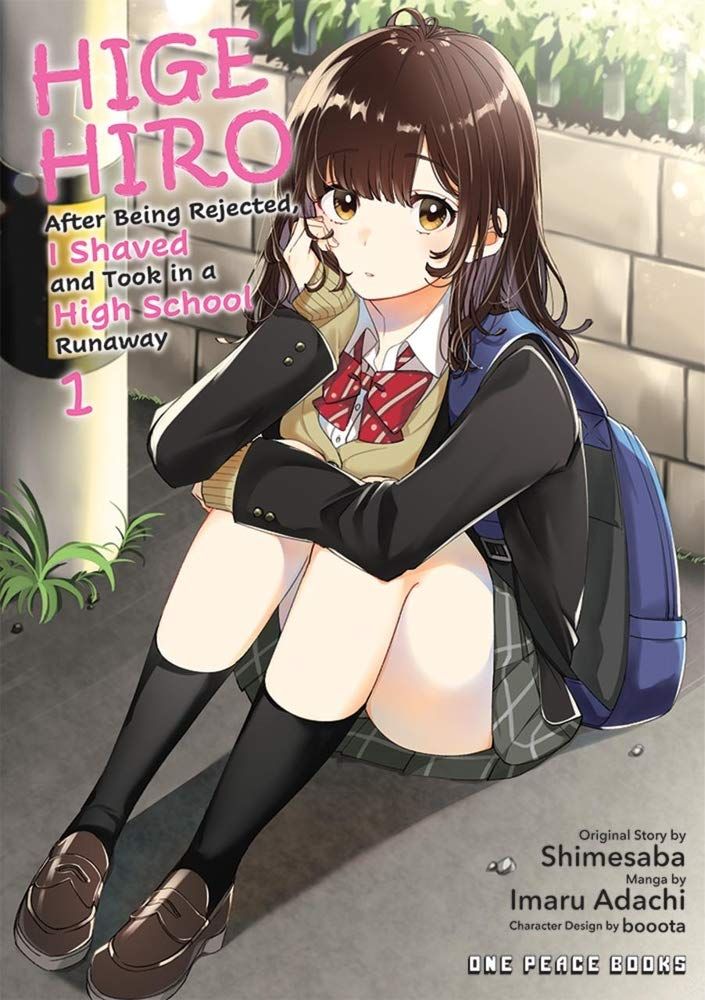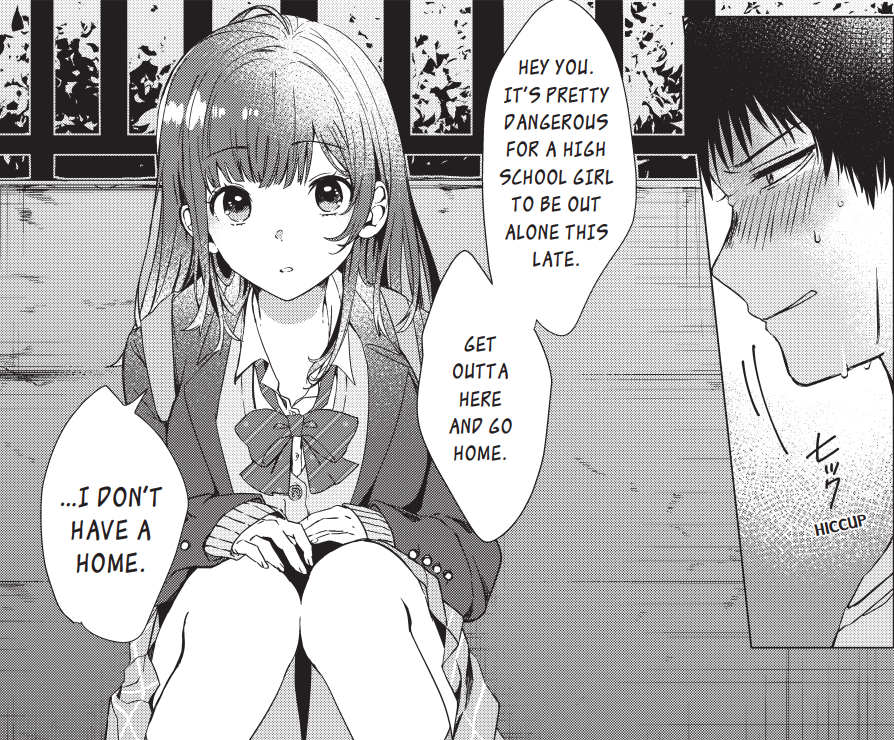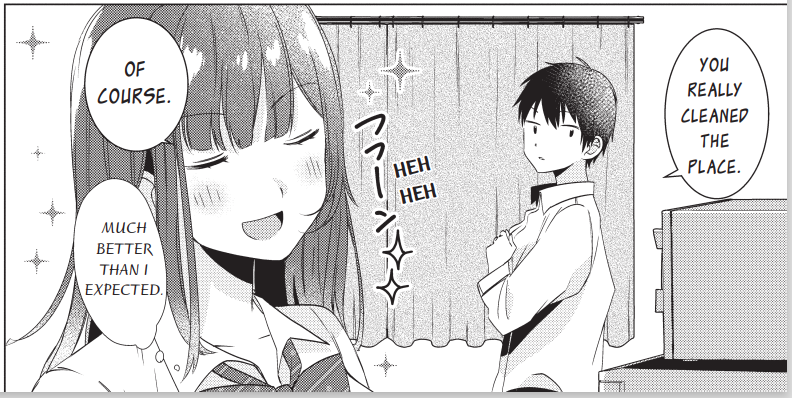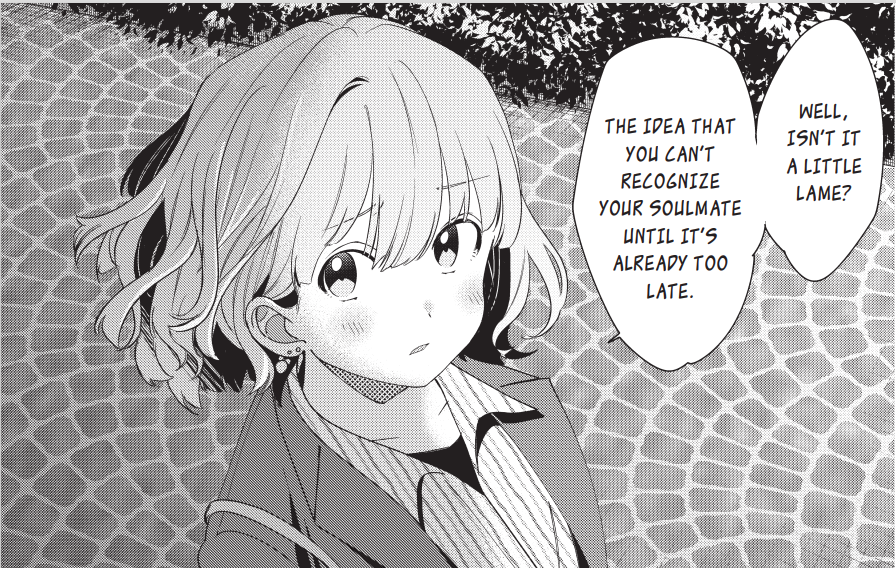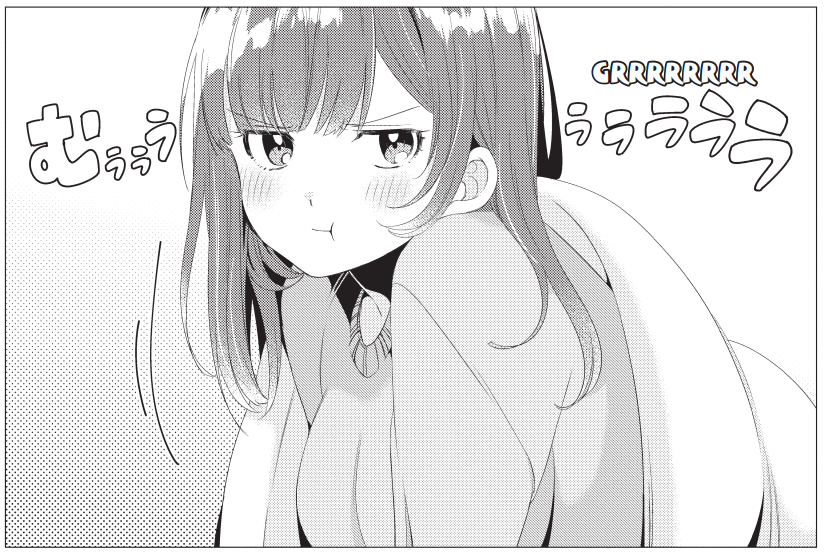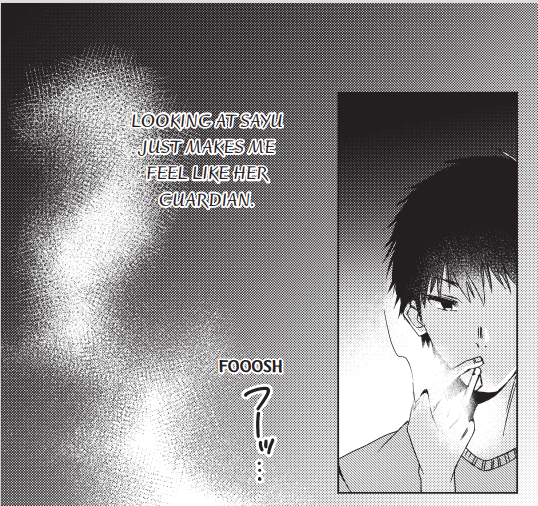Huzzah for Higehiro!
During the late 1990s and early 2000s Japan’s manga and anime fan community became infatuated with a figurative and literary concept called “moé.” Although the term partially referred to having a burning passion for something, another aspect of moé was a platonic parental affection for charming young girls. Overexposure of moé culture and shifting tastes eventually deprecated the theme. But author Shimesaba resurrected the concept with a gentle and mature attitude in 2017 with the publication of the five-volume Hige o Soru. Soshite Joshikosei o Hirou light novel series. “HigeHiro,” as its title was abbreviated, grew in popularity, earning a manga adaptation followed by an anime television series adaptation. One Peace Books will begin offering an official English language translation of the first volume of the Higehiro: After Being Rejected, I Shaved and Took in a High School Runaway manga on October 14.
On his way home from work one evening, young adult office employee Yoshida stumbles across teen runaway Sayu Ogiwara. Sayu offers him sex in return for a night’s shelter, by Yoshida is appalled by the suggestion. Instead, he offers to take her in strictly as an act of charity. Yet his loneliness and her desperation lead to their momentary encounter becoming a tentative lasting arrangement. Thus ensues a heartfelt and emotional drama about two people learning more about themselves as they live together and learn about each other.
The Higehiro manga is drawn well by illustrator Imaru Adachi, taking inspiration from the original light novel illustrations by booota. Readers most familiar with the spring 2021 anime series may be struck by protagonist Yoshida’s appearance in the manga. He looks considerably younger in the manga adaptation than he does in the anime. However, Adachi’s renderings are good. Given that the story is primarily one of grounded, realistic character interaction, the manga illustrations take great care to depict subtle expressions and communicate a lot through unspoken gestures and poses. The graphic art also takes greater care than many manga series to include extensive, detailed background settings that further enhance the story’s real-world verisimilitude. The first volume of the manga contains the story’s first six chapters, ending in a cliffhanger that will certain leave readers eager for more. The manga also includes a two-page afterword by illustrator Imaru Adachi, and a two-page afterword by original creator Shimesaba.
One Peace Books’ translation reads fluidly and exhibits no obvious errors. Japanese language sound effects are translated. Japanese background text is translated only when necessary in order to preserve the original art. The translation does contain some instances of mild adult language, but the story itself is rather adult-oriented as it involves a teen girl prostituting herself. However, apart from some suggestive jokes, the manga contains no nudity, violence, or sex. Further faithful to the contemporary real-world Japanese setting, the translation refers to characters primarily by family name rather than given name. And the translation retains Japanese status demarcations including “-senpai” and “-kun” to designate seniority between co-workers. The translation also retains familiar Japanese terms including “izakaya,” “bento,” and “kotatsu,” that may be foreign to inexperienced manga readers but should be very familiar to most readers familiar with manga. The illustrations also include modern cultural parodies including “Bokumo” phones and “Toyo Cinemas” that don’t hinder reading but may only make complete sense to readers who are very familiar with Japanese corporate brand names.
The first volume of the Higehiro manga doesn’t get far beyond just introducing the scenario and characters, but even this early in the story the narrative already begins to enrich its characterizations and add depth to its relationship building. While countless contemporary romantic manga emphasize sex, Higehiro deliberately downplays vulgarity in favor of a platonic protective affection. In a practical sense, Higehiro can be called a shoujo manga for male readers as it concentrates on emotions and relationships over action yet depicts a trio of women competing for a single man’s attention instead of a man pining for female ministration. The Higehiro manga is a pleasant and charming change of pace compared to typical rom/com manga as it emphasizes mature relationships, integrity, and sincerity over slapstick eroticism all while staying buoyant and cheerful rather than becoming doleful.
